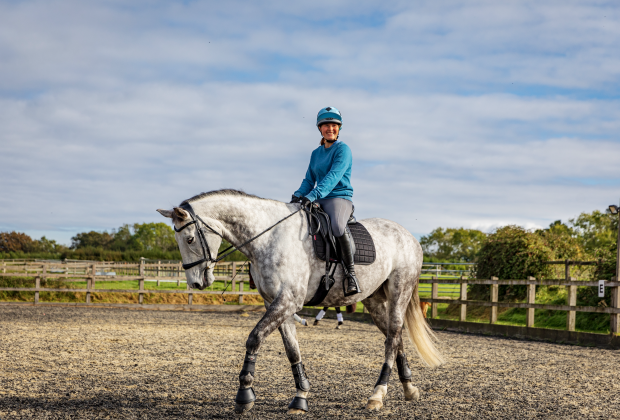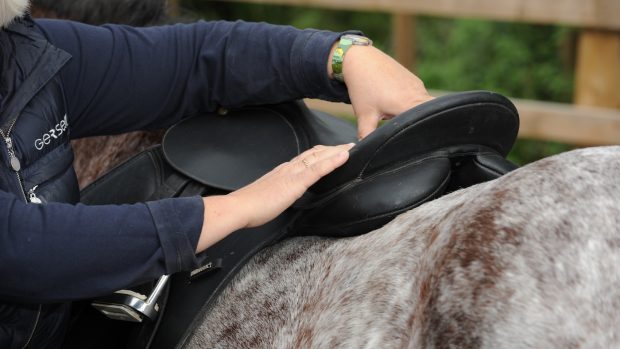In the years since World War II, equine history has been influenced by tremendous social and economic changes; horses have ceased to be working animals, although this has been compensated by increased performance and leisure riding. These changes then produced new attitudes to stable management. However, while this tends to apply to racehorses, the consequences are significant for all horses, particularly foals and youngsters.
New stabling ideas
A survey carried out by vets in the 1980s concluded that modern stables were inferior architecturally to those built last century. But has this inferiority contributed to a greater incidence of disease?Large yards of working horses no longer exist. Instead, we have new-style stabling of varying designs, but with a move from warmth and a controlled environment to fixed open vents, free airflow and fluctuating temperatures.
Ideas within the racing industry have altered dramatically, provoked by increased incidence of disease, oftenviral, mostly affecting the respiratory system. But were the changes based on scientific research? More critically, have they had a beneficial effect to reduce disease, or are they linked to the rising tide of infection?
The answer, in my opinion, is that this change in view was not based on logic, nor did the “open” ventilation system originate from a new scientific basis. I also believe that it has contributed to infection, particularly if they are compared with the French model (pictured above), where a more pragmatic approach has led to less disease.
Temperature control
In the pre-modern era, temperature control was considered critical in horse management and we have never proven this to be wrong. Old equine literature, for example, Modern Veterinary Practice by WJ Miles, advises us that the stable environment should be kept within a narrow temperature band, with a minimum of 50deg F. AF Clarke, MRCVS, writes in the Equine Veterinary Journal, September 1987, about an “ideal temperature range between 10-30deg C” – which is too wide – and for draughts to be eliminated. While advisers seem to accept the point about draughts, buildings are advocated where this is impossible to achieve. Also, although horses may not die from the effects of low temperatures, they become infected, particularly by low grade conditions.
Ventilation policy
But where did these changes come from, and why? Horses have different stabling needs compared with other animals, such as pigs. The racehorse, in particular, cannot tolerate infection if it is to perform to maximum capacity.
In the 1960s and early 1970s, as more people entered the sport and horses were trained from farmyards and garages, there was a tendency to adapt old buildings to new use. Often, with tin roofs and damp walls, trainers were confronted with condensation, dripping on to horses’ backs, and disease. The solution was often ventilation, but at a cost. The building dried out, but the horse was left standing in a draught.
Then there was the “Coolmore system” of ventilation which emerged after a devastating outbreak of a herpes infection in which horses suffering from the disease were less severely affected when kept outdoors than stabled. Again, it was decided that extra ventilation was the answer, to simulate outdoor conditions.However, the outbreak was caused by concentrating too many horses together; four different viruses were isolated and there is every possibility these infected the stabled horses sequentially. Close confinement was the critical factor, not the buildings, freedom to roam was probably the saving factor in those kept out. A third possible reason for the “fresh air” approach resulted from some vets suggesting that most respiratory disease was non-infectious, such as COPD , which I find impossible to accept.In dealing with infection, it is notable that horses kept in cold, damp or draughty conditions become ill more frequently and are more difficult to treat. On the other hand, infected horses moved to warm, dry, draught-free conditions often recover without treatment, and infection is significantly less.
French connection
Added support for this comes from French racing, where stabling is mostly of a specific, uniform and simple design. Trainers in France seldom need to take blood samples because, they say, there is not the same level of infection. Horses still become infected, but there is a huge difference from the UK, and stabling must play a role. In French racing stables, air is only allowed to enter from the front. Stable size and ceiling height are almost standard and the only air outlet is usually a small (15cm x 15cm) vent in the back of the ceiling which enters a loft space or duct. A window over the front door supplements air exchange. What is most noticeable is that this system allows no draughts and, if there is no defect in the building, such as dampness or cold surfaces, the temperature remains constant and the horses are warm. Onhot days, the door can be opened and a mesh inserted to increase flow of air.Where American barns are used, the same principles are adhered to, with each horse in an enclosed compartment, even in the centre aisle of a building. While the atmosphere insome of these can be criticised, trainers maintain they have little or no viral or respiratory problems.
Winter warmer
Under ideal conditions, a horse in training requires as little air exchange in cold winter nights as we do in our cosy living rooms. That does not mean temperatures have to be high, or that top doors need to be closed. But the horse does not like standing in draughts, no matter how subtle, no matter how well rugged, and draughts are impossible to eliminate when there are fixed open vents at eave, ridge or shoulder level.
Warmth does not have to mean air pollution. The stable can be warm and the atmosphere comfortable, if managed properly. A stabled horse cannot be looked at in the same light as a horse at grass – by bringing it indoors, we change the parameters.
Highlighting hygieneAir is fouled by the smells of urine and droppings, as well as by dust in hay, straw and other bedding. However, the answer is hygiene and management, not cold air orpollution. Proper stable design allows the escape of urine and droppings can be removed as often as is practical. The quality of hay and bedding, therefore, is critical.Finally, scientific tests show that respiratory defensive mechanisms in the horse are adversely affected by chilling. If the natural defences are not working, not only is infection more easily contracted, but dust and spores are far more likely to cause disease. Extra rugs will make no difference.




